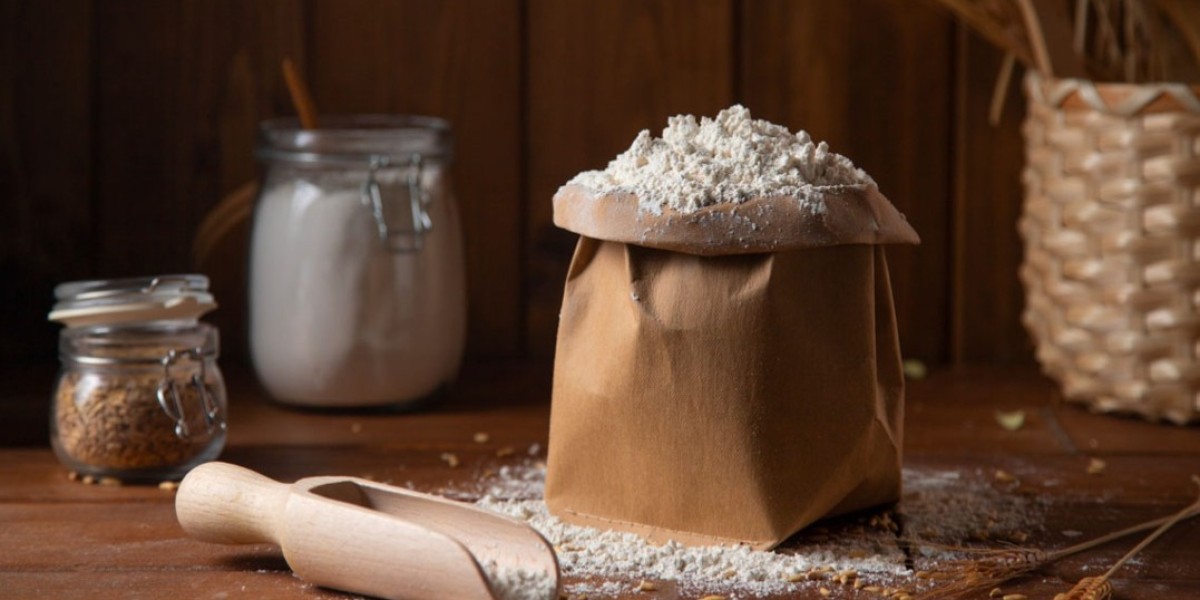In the heart of every Indian kitchen, there's a staple that transcends regional boundaries and cultural differences: atta. Known globally as whole wheat flour, atta is the cornerstone of Indian cuisine, forming the basis of a wide variety of traditional breads like chapatis, rotis, parathas, and puris. This versatile flour is not just a dietary staple but also a symbol of nourishment and wellness. In this blog, we will explore the journey of atta from grain to goodness, discuss what makes the best atta, and delve into some of the top choices for the best atta in India.
## The Journey of Atta: From Field to Flour
### 1. Cultivation of Wheat
The journey of atta begins in the vast wheat fields of India. Wheat is a rabi crop, sown in the winter and harvested in the spring. The fertile plains of Punjab, Haryana, Uttar Pradesh, and Madhya Pradesh are some of the key wheat-producing regions in India. The quality of wheat is influenced by various factors, including soil quality, climatic conditions, and farming practices.
### 2. Harvesting and Threshing
Once the wheat is mature, it is harvested using combine harvesters. The harvested wheat undergoes threshing, a process that separates the grain from the chaff. This is typically done using threshing machines, although traditional methods involving manual labor and animals are still prevalent in some rural areas.
### 3. Cleaning and Milling
The cleaned wheat grains are then transported to flour mills, where the milling process begins. Milling is a critical stage in the production of atta, as it determines the texture and nutritional content of the flour. The grains are cleaned thoroughly to remove any impurities and then ground using stone mills or modern roller mills.
### 4. Grinding Process
Traditionally, stone grinding or chakki milling was the primary method used to produce atta. Stone grinding ensures that the flour retains its essential nutrients and has a coarse texture, ideal for making soft and pliable dough. Modern roller mills, on the other hand, offer a more efficient and hygienic way to produce atta, though some argue it may not capture the same texture as stone-ground flour.
### 5. Packaging and Distribution
The final step is the packaging and distribution of atta. The flour is packed in moisture-proof bags to ensure it remains fresh during transit and storage. From there, it makes its way to local grocery stores, supermarkets, and eventually, to the kitchen shelves of households across the country.
## What Makes the Best Atta?
### 1. Nutritional Content
The best atta is one that is rich in nutrients. Whole wheat atta is a powerhouse of vitamins and minerals, including B vitamins, iron, magnesium, and dietary fiber. The bran and germ in whole wheat contribute significantly to its nutritional value, making it a healthier option compared to refined flours.
### 2. Texture and Freshness
The texture of atta plays a crucial role in the quality of the final product. The best atta has a fine, yet slightly coarse texture, which helps in making soft and fluffy chapatis. Freshness is equally important, as fresh atta yields better-tasting and more nutritious breads.
### 3. Purity and Additives
Pure atta is free from any additives or preservatives. Some commercially available atta brands may include additional ingredients like barley or soya flour to enhance nutritional value, but it's essential to check the label for any unwanted additives.
### 4. Brand Reputation
The reputation of the brand also matters when choosing the best atta. Established brands often maintain stringent quality control measures to ensure the consistency and purity of their products. Customer reviews and word-of-mouth recommendations can also be helpful in identifying the best atta brands.
### Popular Atta Brands in India
To help you make an informed decision, here are some of the best atta brands in India:
- **Ecotyl Atta**: Known for its superior quality, Ecotyl Atta is made from high-quality whole wheat grains sourced directly from farmers. It is available in various variants, including multigrain and organic.
- **Nutty Yogi Atta**: Nutty Yogi is a trusted brand that offers finely ground, fresh atta. It is known for its consistent quality and is a popular choice for making soft and fluffy rotis.
- **Two Brothers Atta**: Produced by the renownedTwo Brothers, this atta is made from organically grown wheat. It is a preferred choice for those looking for a natural and healthy option.
- **Sugarlif Atta**: This brand offers high-quality whole wheat atta that is perfect for making a variety of Indian breads. It is known for its fine texture and rich taste.
## Health Benefits of Atta
### 1. Rich in Fiber
Best Atta is an excellent source of dietary fiber, which aids in digestion and helps maintain healthy bowel movements. A diet rich in fiber can also help in managing weight, reducing cholesterol levels, and preventing constipation.
### 2. Packed with Nutrients
Whole wheat atta is packed with essential nutrients like iron, magnesium, and B vitamins. These nutrients play a vital role in maintaining overall health, including boosting immunity, improving energy levels, and supporting metabolic functions.
### 3. Low Glycemic Index
Atta has a low glycemic index, which means it causes a slower rise in blood sugar levels compared to refined flours. This makes it a healthier option for people with diabetes or those looking to manage their blood sugar levels.
### 4. Supports Heart Health
The high fiber content in atta helps reduce bad cholesterol levels, thereby supporting heart health. Regular consumption of whole wheat atta can lower the risk of cardiovascular diseases.
## Versatile Uses of Atta in Indian Cuisine
### 1. Chapatis and Rotis
The most common use of atta in Indian households is for making chapatis and rotis. These unleavened flatbreads are a staple in many Indian meals and are known for their soft texture and nutritional benefits.
### 2. Parathas and Puris
Atta is also used to make parathas and puris, which are popular breakfast and snack items. Parathas are layered flatbreads often stuffed with vegetables, while puris are deep-fried and enjoyed with various accompaniments.
### 3. Bakery Products
Atta is increasingly being used in bakery products like bread, biscuits, and cakes. Whole wheat baked goods are gaining popularity for their health benefits and rich flavor.
### 4. Traditional Sweets
Atta is an essential ingredient in many traditional Indian sweets like halwa and ladoos. These sweets, made with whole wheat flour, ghee, and sugar, are enjoyed during festivals and special occasions.
## Conclusion: Embracing the Goodness of Atta
Atta, with its rich nutritional profile and versatility, is truly a gift from nature. From the golden wheat fields to the heart of Indian kitchens, the journey of atta is a testament to its importance in our daily lives. Choosing the best atta, whether it’s Aashirvaad, Patanjali, Shakti Bhog, Pillsbury, or Annapurna, ensures that you and your family enjoy the goodness and health benefits of whole wheat flour. Embrace the tradition and goodness of atta, and let it continue to nourish and delight your culinary experiences.
In conclusion, atta is more than just a staple; it is a symbol of health, tradition, and culinary excellence. By choosing the best atta, you are not only ensuring nutritious meals but also supporting a legacy that has been passed down through generations. So, next time you make a soft, warm chapati or a crispy, golden puri, remember the journey of atta from grain to goodness.



